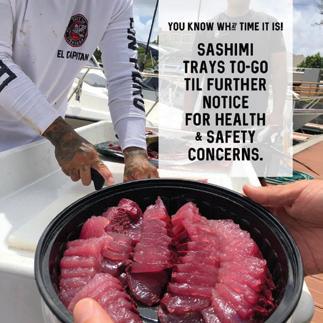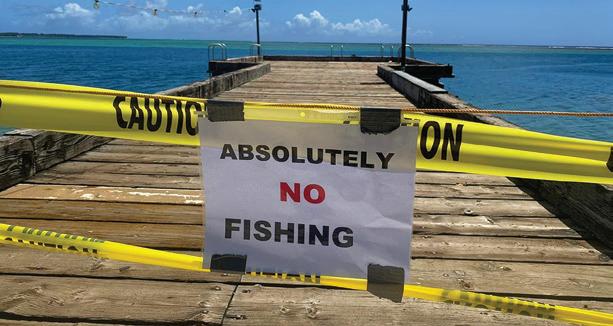
3 minute read
The Magnuson-Stevens Fishery Conservation and Management Act
Guam
The COVID-19 pandemic hit Guam
Advertisement
hard and paralyzed the island of around 160,000 people. A strong fear of the unknown compelled most to heed Gov. Lou Leon Guerrero’s executive orders of staying at home, business lockdown, social distancing, roadblocks and mandatory quarantine for those who traveled.
The military was not spared. The aircraft carrier USS Theodore Roosevelt had just left Guam when it was forced to return due to the virus. Of the carrier’s more than 4,000 sailors, 1,150 tested positive and one person died as a result of the virus. The sailors who tested positive were either admitted to the island’s naval hospital or sequestered on base. Those who tested negative were quarantined in several of Guam’s empty hotels. The pandemic affected the island’s recreational and subsistence fishermen the most. Other than a few charter boats, commercial fishing vessels and a single tuna transshipper, the island’s fishery is comprised of these non-commercial fishermen, some of whom are expense fishermen, selling a portion of their catch to cover costs. Customers of locally caught fresh fish dried up. A few restaurants resorted to curbside sales pickup to sustain cash flow. Visitors to Guam, a major consumer of seafood products and fresh fish, peaked at more than 1.5 million people before dropping to near zero due to flight suspensions. Charter boats, like other businesses that rely almost solely on the visitor and military markets, initially all shut down operations. Employees were laid off or sought other work. Later, a few companies re-opened and have implemented their own social distancing measures by limiting the number of passengers on their boats.
The Easter season, typically the highest few weeks in the year for fish consumption in the Guam where 85% of the population is Catholic, was greatly impacted by the lack of fresh, locally caught fish. Manny Dueñas, president of the Guam Fishermen’s Cooperative Association (GFCA), said his business saw up to an 80% decline in fish and retail sales. Community fish stores were shut most of the day and opened only when the few fishermen who supply them returned. Social media was full of comments from those sequestered at home who wanted to know where they could get fresh local fish, but with few replies. The long-standing annual Division of Aquatic and Wildlife Resources Kids’ Fishing Derby scheduled for April and June 2020 at Masso Freshwater Reservoir and at the Asan War in the Pacific Beach Park, respectively, were canceled due to COVID-19. Plans for the 25th anniversary of the Guam Marianas International Fishing Derby and other summer events remain undecided.
Not seeing an end in sight, a few local fishing organizations penned a letter to Gov. Leon Guerrero pleading with her to designate fishing as an essential activity and to seek federal CARES Act funding to help the fishing community remain financially sustainable. Although fishing activity, sales of fish and tackle shops were not on the mandatory shut down list, dedicated funding was not immediately made available to help fishermen. Some applied for federal financial support, but, for many, the damage was already done. It is estimated that if the impacts of the pandemic continue, Guam’s fisheries will experience an annual loss of more than $6 million in 2020.

Left: Local restaurants turn to curbside sales combined with social media promotions while establishments are closed. Photo courtesy of Kin Cruz. Right: Fishing is allowed and considered an essential activity in Guam as long as social distancing is practiced. Some locations, such as Malesso Pier shown in the photo, have been temporarily closed to help enforce this rule. Photo courtesy of Tatiana Talavera.







